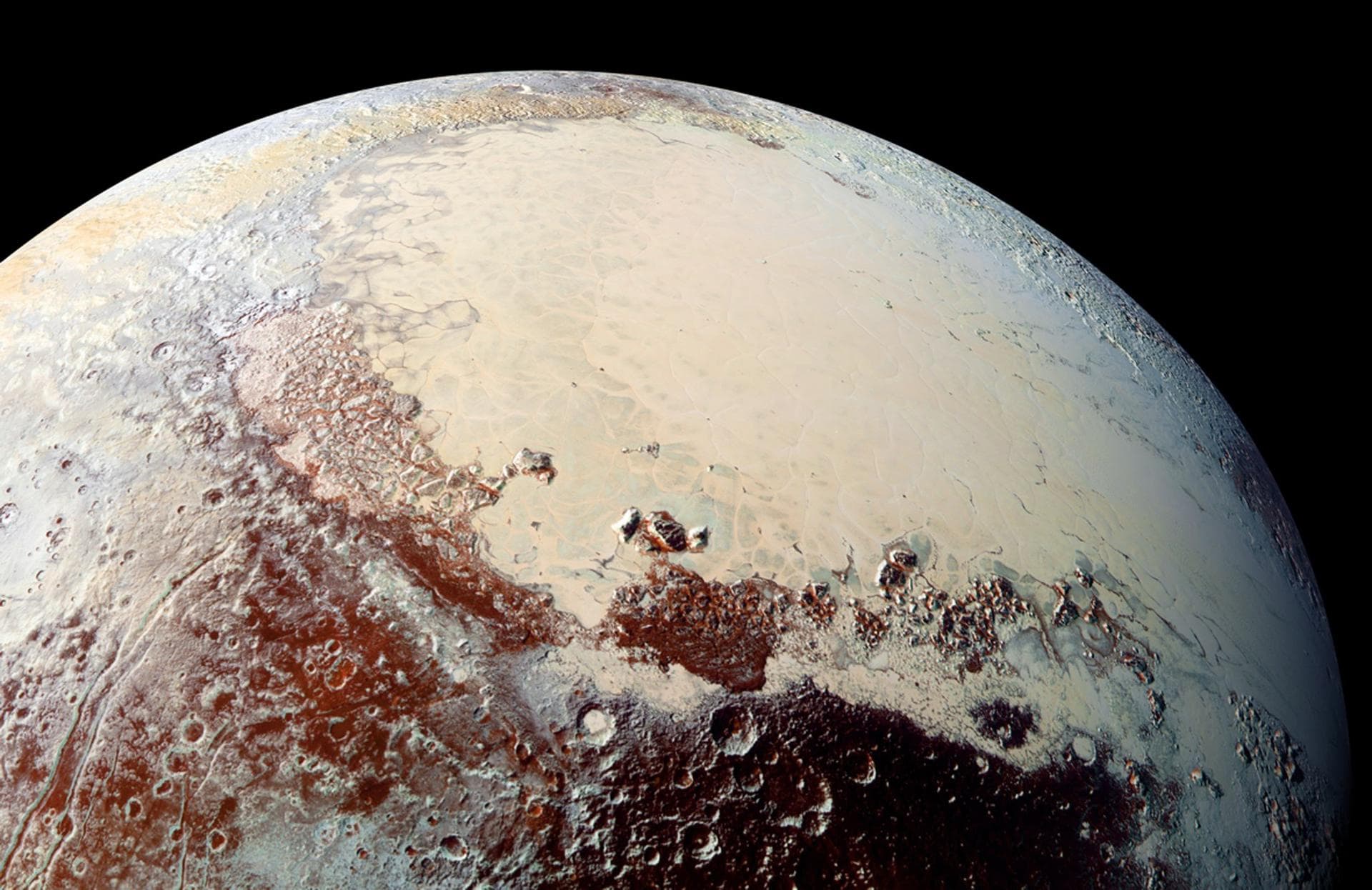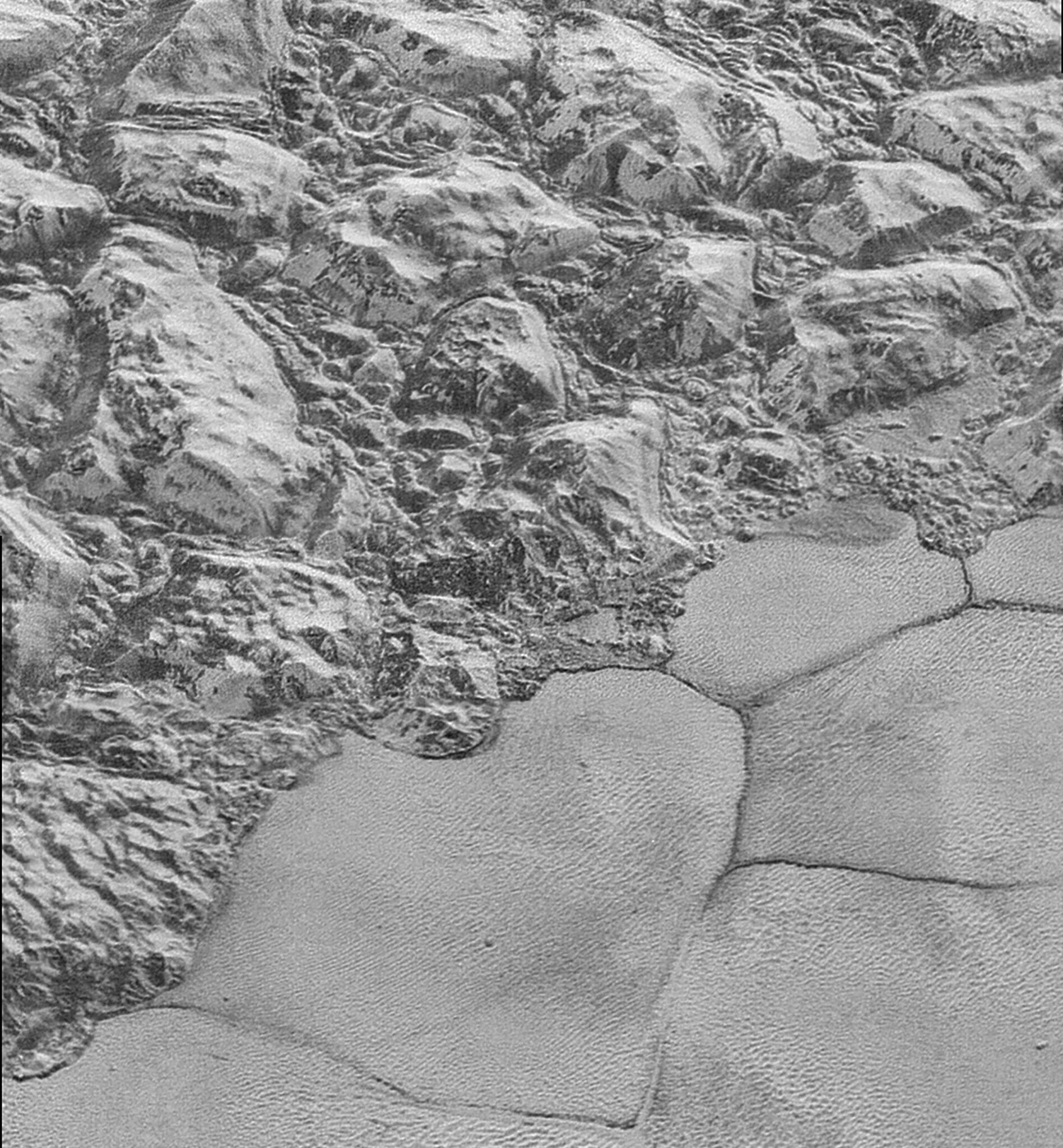Pluto was visited by only one spacecraft, New Horizons, which flew past the dwarf planet on July 14, 2015. This short but significant visit allowed us to get impressive images and a huge amount of data, which opened up a bright and dynamic world in front of us. In addition to Pluto’s heart, floating ice hills, nitrogen icebergs, and nitrogen winds, New Horizons data hints at the existence of an ocean beneath Pluto’s icy crust. This effectively made Pluto and its largest moon Charon members of the Ocean Worlds club.

For decades, planetary scientists believed that Pluto was too cold to maintain liquid water in its interior. Pluto orbits far beyond the “freezing line” of the Solar System, where volatiles become solid. At an average surface temperature of -229°C, even nitrogen and methane become solid as stone. Calculations by scientists proved that the dwarf planet would have lost almost all of its heat shortly after formation, and it is cold to the core.
New Horizons data has provided ample evidence that Pluto probably has an inner ocean. The existence of this ocean is still being debated, but the theory is gaining more and more acceptance. Planetary scientists Alex Nguyen and Dr. Patrick McGovern used the data from New Horizons to create new mathematical models to explain cracks and bulges in the ice.

Their results show that the ocean can exist under an ice shell with a thickness of 40 to 80 km. Such a deep location allows Pluto to maintain a state of liquid water, despite surface conditions. They also calculated the likely density or salinity of the ocean based on surface features and determined that Pluto’s ocean was maybe 8% denser than Earth’s oceans. Such a level of salinity would make Pluto’s ocean comparable to the Great Salt Lake, the Dead Sea and other highly saline bodies of water on Earth.
If the ocean were less dense, the ice shell would collapse, which would lead to more cracks on the surface. If it were more dense, the ice sheet would be more buoyant, which would be noticeable by fewer cracks.
Earlier we reported that a key component of life had been found in the Enceladus ocean.
According to universetoday.com


